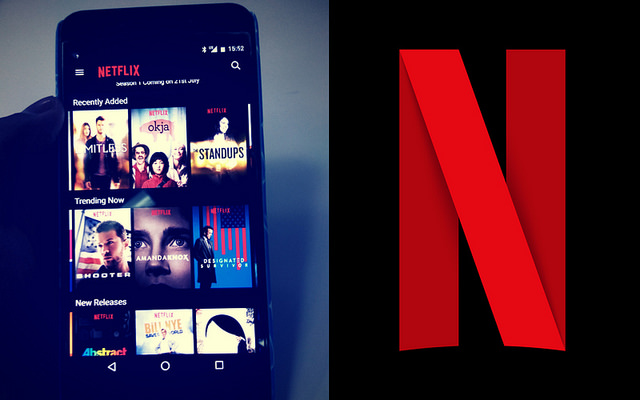The Rising Popularity of Foreign Language Content on Netflix
When it comes to learning a language, you have to find the learning methods that work for you, and that includes finding material in the language you're learning. For some that could be favourite YouTube channels, and for others finding new music to learn the lyrics of so you can sing along or film and TV shows to binge on. With streaming services like Netflix offering more and more of both in a growing number of languages, there is a world of resources available at your fingertips to help you practise! Learn more about the rise in foreign language content on Netflix and get ready to pull up your streaming list!
La casa de Papel via Giphy
A world outside of the US
Because yes, Hollywood has finally realised that beyond its shores there is an entire world of different languages, cultures and ideals. And that even within its own lands, there are people that aren't, well, just English-speaking.
A poll conducted earlier in the year by TV Time of its 12 million users ranked the most followed Netflix foreign language shows. Here is what they discovered, along with the dominant language of each show:
1. La Casa de Papel (Spanish)
2. Dark (German)
3. 3% (Portuguese)
4. Cable Girls (Spanish)
5. Suburra (Italian)
6. Marseille (French)
7. Devilman Crybaby (Japanese)
8. Erased (Japanese)
9. Ingobernable (Spanish)
10. Club de Cuervos (Spanish)
What is interesting here is that so many titles are in Spanish. Anyone would think Spanish was a widely-spoken language or something, only 442.3 native speakers million globally according to Ethnologue, beating English at 378.2 million native speakers.

Photo via Flickr
Upcoming
While the world's most widely spoken language Mandarin doesn't appear on this list yet, we are sure this new approach to appealing to a wider audience will mean Mandarin shows appearing on this list sometime soon, along with numerous other languages.
Netflix is currently expanding into new regions like the Middle East, which will mean shows in Arabic. In fact, Netflix already has a hugely popular show with Arabic content in Narcos, with 104 million subscribers hitting play to watch this inspiring show spoken in Arabic, English, and German.
Learning a new language? Check out our free placement test to see how your level measures up!
Here are some more international shows for us to look forward to if we aren't already watching:
- 1983 (Polish)
- The Rain (Danish)
- Fauda (Hebrew and Arabic)
- Paquita Salas (Spanish)
- Bardo (Mandarin)
- Sacred Games (Hindi and English)
- Kingdom (Korean)
- Terrace House (Japanese)

The Rain via Giphy
Dubbing and subtitles
The Rain, a Danish original series, is using both dubbing and subtitles to get its message across. And while we, as language lovers and learners, know subtitles are a fantastic way to help you get to grips with new vocabulary, there are those of us in the world who are less welcoming of these words appearing on our screens. Mostly Americans, apparently, who seem to find that subtitles take something away from the shows and films they are watching.
In any other country in the world, subtitles of foreign language media have always been a norm, or if not a norm, then an acceptable exotic addition to enhance our viewing pleasure. And while it's true that no subtitle or dubbing service can perfectly convey every hidden meaning and idiom all of the time, this idea that viewers are somehow missing out by having to rely on subtitles is just a glimpse into how non-English speakers have to sometimes view this world.
The alternative to having to deal with the eyesore of subtitles would be to just learn the language, of course.
Expanding horizons
There is another added benefit to the increase in so-called foreign language media, besides helping all us language learners. This exposure to other places, people, and cultures, even through our TV screens and laptops, is opening our eyes up to the world in ways entertainment really hasn't before.
Those of us who enjoy reading have likely already been exposed to entire new worlds, devouring the descriptive words from the page that detail sprawling cities, expanses of mountains and desert, and existences we can only ever dream of. To have this as a visual allows those who prefer TV and film over reading to enjoy that immersion as well. And in doing so, in giving an insight into how others live around the world—in ways that are both similar and different than our own—surely has to have an impact on ignorant, xenophobic views.
Whatever your reasons for consuming foreign language media, we think it is good for you! There is so much more to this world than that of the familiar buildings, streets, and stores around you. Get out there and explore—even if that is from your sofa!



